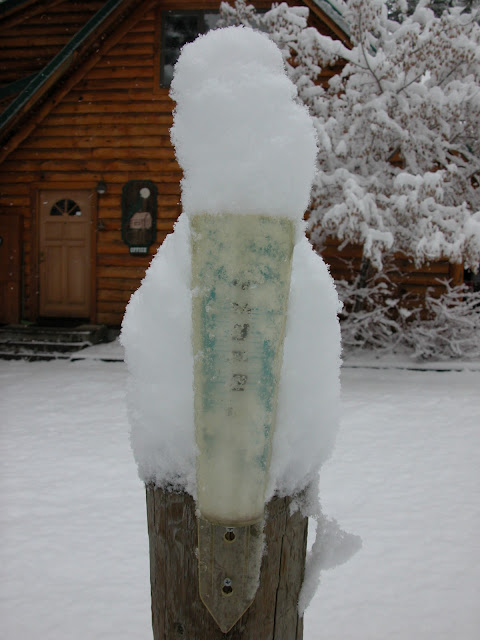I heard my first frog of the season at the Lonesome Duck
today, 3/29/2011. It was at our pond at the Eagle's Nest cabin. I probably
mistook the noise I made, anything will do, as a female in the area. It was
probably a tree frog. They are abundant here. Yet, from the sound alone I don't
know for sure. There are several of these medium sized species that are in the
area, some quiet rare. (There is even a frog with a tail that lives within
Crater Lake National Park.) I would be interesting to get a good look. The true
frogs include some that breed very early in the spring, some while there is
still ice(!) on the, usually shallow water bodies were they mate. Indeed,
cold-blooded creatures!
The Lonesome Duck was full Monday eve, including a couple
from near Frankfort, Germany. All three groups took at least one trip to Crater
Lake. The snow was beautiful as were the views of the lake.
A loss of 10,000 Snow Geese and other waterfowl is being
reported in areas of Lower Klamath Lake and Tule Lake National Wildlife
refuges. The direct cause is avian cholera, rarely a threat to humans. The real
cause is the lack of water in the refuges which concentrates the birds to
unhealthy level. It looks like it is going to be a dry year. We hope there will
be some water to spare for the refuges.
Yesterday, Wednesday, I fished the Klamath Canyon just below
the J.C. Boyle dam. My partner was Robert West; he really knows how to fish
this type of situation. It was windy with flurries but the pocket-water fishing
with nymphs was good. The fish run mostly 10-14" and are beautifully
colored this time of year. There were Dippers in the Canyon; strange birds that
like fast mountain streams. They are related to the wrens, seemingly not very
aquatic, with fairly normal feet. Not like a duck. Yet, they swim easily when
they need to, but most of the time they dive under water and swim with their
wings or cling and crawl on the underwater rocks with the sharp little claws on
their feet. They are roughly the size of a robin but plumper. They are also
known for hiding their nests behind the curtain of water at waterfalls, large
and small.
There was a Rough-legged Hawk on an irrigation wheel on the
Algoma flat along US 97 north of Klamath Falls as I drove to town. They are a
bird of the tundra but overwinter in the Klamath Basin in large numbers. Most
have left so this was a late bird. Small bills and legs for their size reflect
one of their main prey up north, lemmings! I was attending another OHV (Off
Highway Vehicle) U S Forest Service committee meeting in the eve in Klamath
Falls. We have some spectacular areas nearby and do not want to mess them up.





.jpg)


